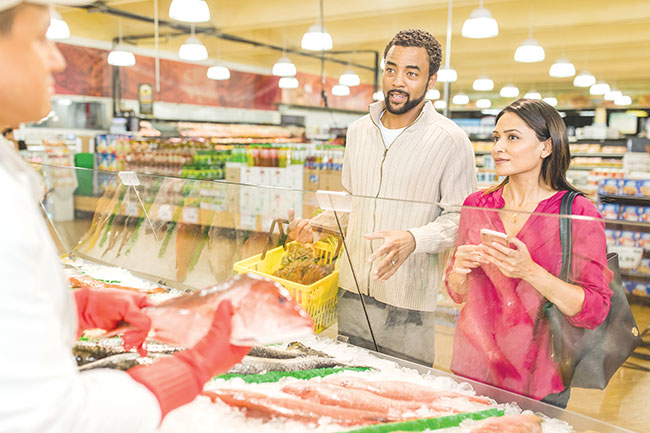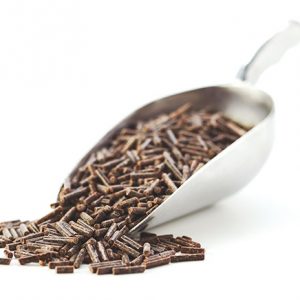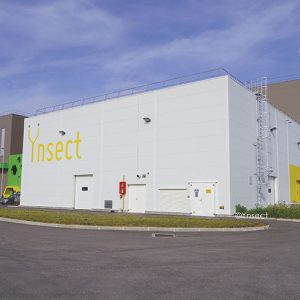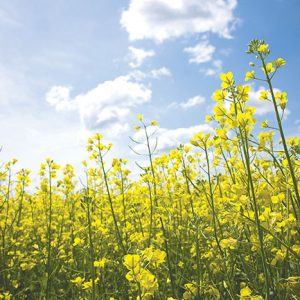
Features
Fish Nutrition
Research
Sustainability
Researchers validate novel feed ingredients, but scale is another matter
December 4, 2020 By Lynn Fantom
 Cargill says it is sourcing a “basket” of sustainable options to lessen the pressure on fishmeal and fish oil. (Photo: Cargill)
Cargill says it is sourcing a “basket” of sustainable options to lessen the pressure on fishmeal and fish oil. (Photo: Cargill) The quest to find alternative aquafeed ingredients intensified in recent months, with announcements about successful feed trials of canola-based products, a study of how krill meal enhances the health of Atlantic salmon, and even plans to evaluate a single cell protein produced from industrial emissions of carbon dioxide.
They are all part of a drive to ensure that the growth of aquaculture will not be limited by the supply of fishmeal and fish oil, which has been flat for the last forty years.
And while single cell proteins, insects and microalgae appear to be winning favor from both analysts and investors, industry watchers question how quickly they can scale. With giants like Cargill taking seats at several tables, it is not a matter of if, but when.
An analysis published in Nature Food in May does the math and, through it, suggests that the recipe for success may well be a combination of complementary ingredients, including those that are plant-based, to augment forage fish – the small pelagic fish such as herrings, sardines, and anchovies used to make meal and oil.
Aquaculture now uses approximately 16 of the 29 million tonnes of forage fish, according to the analysis. To forecast what will be needed by 2030, researchers tapped three growth scenarios for aquaculture, yielding demand ranging from 24 to 38 million tonnes. They then projected the highest threshold of fishmeal and fish oil novel aquafeed ingredients could plausibly replace. The gap forecast aquaculture’s global forage fish demand in 2030: a dramatic reduction to between 8 and 10 million tonnes.
Researchers at UC Santa Barbara, the University of Tasmania and the International Atomic Agency built this analysis from a synthesis of 264 scientific articles. “This was a maybe-scenario,” says the paper’s lead author Dr. Richard Cottrell – dependent upon the alternative proteins getting to scale.
Single cell proteins
Single cell proteins (SCPs) have the potential for high production volumes, spurred on by investments, joint ventures and government grants. They will become commercially relevant and scale more rapidly than either insects or microalgae, predicts Laura Krishfield, a research associate at Lux Research.
SCPs are a novel aquafeed ingredient, but not exactly new. In fact, the term was coined in 1966 by an MIT scientist. “Research of single cell proteins has been going on for a while, but interest is recently renewed due to the increasing demand for alternatives to fishmeal,” Krishfield notes.
SCPs are the dried cells of micro-organisms used as protein supplements both in human foods and animal feeds. Including yeast and bacteria, they grow by using inexpensive feedstock and wastes. Since these include agricultural by-products and industrial wastes – from potato starch processing waste to methane – SCPs have a ‘circularity’ appeal where ‘wastes become resources.’
Scientists have conducted extensive trials to evaluate growth and feed conversion when fishmeal is replaced by an SCP product to feed whiteleg shrimp, Atlantic salmon and Rainbow trout.
“These studies are highly encouraging of SCP’s role in the growing aquaculture industry. Not only do they offer another high-quality protein ingredient applicable across a wide range of species, but several studies suggest further health benefits to the fish and shellfish,” notes a paper published last February in Current Opinion in Biotechnology.
And now, the biotech companies behind such innovation have the potential to scale faster because of funding from “aligning industries,” including both ingredients companies and energy producers, according to Lux.
Insects
Venture capital funding is fueling the ramp-up from pilot- to industrial-scale insect feed production, according to Lux.
With additional backing from the European Union, Ynsect has broken ground on what will be the first fully automated facility to produce insect protein. Integrating both farming and processing of mealworms at its operation in northern France, Ynsect will supply meal to Skretting, which has been testing insect feed formula since 2014.
InnovaFeed, another French company, is also constructing a new production site in northern France next to a starch facility. A key strategic element of the company, which espouses a “zero waste” philosophy, is to locate operations – it has plans for five – near agro-industries whose co-products can feed InnovaFeed’s larvae.
Last year, InnovaFeed and Cargill formed a strategic partnership which will tap cereal co-products for insect feedstock.
Beyond critical funding, such partnerships with companies in adjacent industries can bring to bear technologies relevant to start-ups, as well as powerful operational experience.
“They’re really helping to push scalability forward,” says Dr. Joshua Haslun of Lux Research.
In addition to Ynsect and InnovaFeed, other key players in insect feed include Protix, AgriProtein, and Nutrition Technologies, headquartered in the Netherlands, England, and Singapore, respectively. But there are many others – significantly more than SCPs, a fact that will make future production levels “pretty competitive” with the output of SCPs, says Krishfield.
The European Union legislation of 2017 that permitted insect protein in aquafeed has opened up opportunities in many geographies. The International Platform of Insects for Food and Feed (IPIFF) has 57 members from 21 countries.
Tests of feed produced from crickets, mealworms and black soldier fly larvae have shown effectiveness as an ingredient up to 30 percent.
Because most wild fish eat insects as part of their natural diet, this fishmeal replacement garners certain positive perceptions. That approval also accrues because food waste and by-products are used to feed larvae.
A challenge that faces these producers, however, is the variable quality of the feedstocks that nourish the insects.
To ensure consistency, some insect feed producers analyze the nutritive content of the different waste coming in, calculate how to mix them, and develop their food cakes that then go to the insect production, says Haslun.
“It is an interesting level of competence to have to monitor, manage, and standardize an input to make an industry product that’s reliable and highly nutrient-dense – down the line,” he notes.
Microalgae
Microalgae have long been successful feed sources in hatcheries. In recent years, scientists have been in pursuit of their potential as a fishmeal replacement for species like Atlantic salmon and Nile tilapia.
A key challenge has been not only to determine which of the approximately 200,000 microalgae species are most suitable but also the optimal inclusion levels for digestibility, nutrient retention, and feed conversion ratios.
Some of the most exciting news coming out of the sector involves microalgae as a functional feed ingredient to supplement traditional feeds during sensitive times of production.
Veramaris, a joint venture between Dutch biotechnology firm DSM and multinational chemical giant Evonik, has zeroed in on raising the algae strain Schizochytrium ssp, feeding it dextrose from corn feeds in huge fermentation tanks. Scaling from pilot sites in Slovakia and South Carolina to a new production facility in Nebraska, completed last year, the company adds sustainability credibility by feeding the remaining biomass to cattle after it processes algae to extract oil.
But the process is expensive. According to Lux, algae protein production remains economically unviable to compete against existing protein sources. Cottrell agrees, adding, “No producers will take a feed that ultimately lessens the efficiency of the fish feed conversion because this fundamentally embeds into their overheads. Feed is such a big part of production expenses.”
In addition, says Krishfield, high demand from competing sectors hinders algae innovation for the aquaculture feed industry. For example, Dutch ingredient manufacturer Corbion produces an algal oil for aquaculture known as AlgaPrime DHA, but also offers branded products for skin and hair care, food, and lubricants in what it touts as its “algae portfolion.”
Canola
New technologies are also bringing to aquafeed a plant crop that has been available since Canadian scientists first bred it from the same family that includes mustard, broccoli and cauliflowers back in the 1960s. (Thus, “can” begins the name of this healthy oil.)
Among the forerunners is Botaneco, with its novel technology that separates and purifies the natural ingredients from oilseeds. In August, the Alberta, Canada-based company announced that tests starting in 2019 at the Centre for Aquaculture Technologies “showed excellent feed acceptance, salmon growth, and weight gain,” according to the press release issued by Protein Industries Canada, an investor in the project to open new markets for canola.
Also in August, Nuseed announced that its trademarked new product called Aquaterra is a “highly effective, sustainable” partial replacement for fish oil in aquaculture feed. Trials conducted in Chile over 18 months with three million salmon across three sites were the largest study of its type with new feed ingredients, the company says.
Nuseed is a subsidiary of Melbourne-headquartered Nufarm, an agribusiness giant operating in more than 100 countries. Sounding a note of environmental sensitivity, the company has specified that its new product is derived from canola grown on existing, converted canola farmland.
In addition to Atlantic salmon, canola-based alternatives to omega-3 fish oil have been tested effectively with Rainbow trout and Nile tilapia.
Cargill also has a seat at this table, with its own novel omega-3 oil, Latitude, which has been effective in replacing 100 percent of fish oil. As a precursor to fully entering the market, it will be available this year for market development purposes, says Chantelle Donahue, the commercial leader for Latitude.
Picking the winner
Many factors will determine the ingredients most important to helping aquaculture feed the future: nutritive performance, price and cost stability, and a reliable supply year-round. Also high on farmers’ lists is the impact on fish flavour.
To address that key criterion, InnovaFeed organized an exclusive tasting for top chefs to sample insect-fed trout. Veramaris conducted a blind taste test in which Kampachi raised on algal oil was deemed to have a more desirable taste compared to fish fed on a standard diet. And Aker BioMarine, which harvests Antarctic krill, reports that supplementing the diet of Atlantic salmon produced higher fillet firmness.
Another key concern is sustainability – not in terms of whether or not the resource will run out but how it will affect greenhouse gas emissions, land use, water demand, and other resources. Analysts agree there is a need for a full lifecycle assessment of the environmental impact of each novel ingredient – and they have yet to be fully tackled, according to Lux.
“There’s no silver bullet for replacing fishmeal. We’ve known that for a long time now, and there’s going to be a lot of efforts needed across feed manufacturing, as well, to produce the most effective feed in terms of using complementary ingredients,” says Cottrell.
Cargill has described its pursuit to lessen the pressure on fishmeal and fish oil as sourcing a “basket” of sustainable options from terrestrial sources, by-products, and novel ingredients. How much of each is yet to be determined, but within such a basket may lie the winning meal plan.

Calysta is led by Dr. Alan Shaw, shown here at the company’s first production facility in the UK. Calysta has announced partnerships with Cargill, British Petroleum, and Chinese-owned Bluestar Addisseo.
Follow the money
Single cell proteins (SCP), also known as microbials proteins, deserve a sustainability fan club because they are commonly grown on agricultural waste products. They also can develop using carbon from carbon dioxide or methane.
The ability to grow with such different feedstocks also yields options in terms of economic sustenance. And to date, this sector in novel aquafeed has been receiving investments from both ingredients companies and energy producers
Last year Cargill inked a deal with White Dog Labs (WDL) for its SCP product produced by fermentation with corn feedstock. The animal nutrition giant plans to offer it initially in salmon feed, with the possibility of expanding to shrimp and other species as White Dog Labs’ production volume increases. (COVID-19 has pushed back the opening of a new WDL production facility in Minnesota, which had been slated to start production this year.)
This is not Cargill’s first foray into SCPs. In 2016, it formed a joint venture called NouriTech with another biotech firm, California-based Calysta. When NouriTech’s plant in Memphis, Tennessee, is completed in 2022, it will be the world’s largest gas fermentation facility, according to NouriTech.
Last year, British Petroleum made a $30 million investment in Calysta and will take a seat on Calysta’s board. While Calysta will get funding and benefit from BP’s operations experience, BP will supply power and gas to Calysta’s feed protein plants.
And just to show that Calysta’s dance card is not full, the alternative protein producer in February signed a joint venture with Chinese-owned feed additives maker Bluestar Addisseo to build a plant in China, anticipated to deliver 100,000 tonnes of aquaculture feed.
The high capital expenditures for these plants has been a hurdle for the biotech start-ups to scale, but the wave of investments from companies, joint ventures, and government grants are driving momentum.
“Everybody is trying to figure out how they fit into the equation right now,” says Dr. Joshua Haslun, who specializes in emerging ecosystems in agrifood at Lux Research.
Industry watchers will continue to follow the money.
Print this page
Advertisement
- Medicated feeds for catfish disease worth the extra cost
- Russian aquaculture firm to expand Volny hatchery











